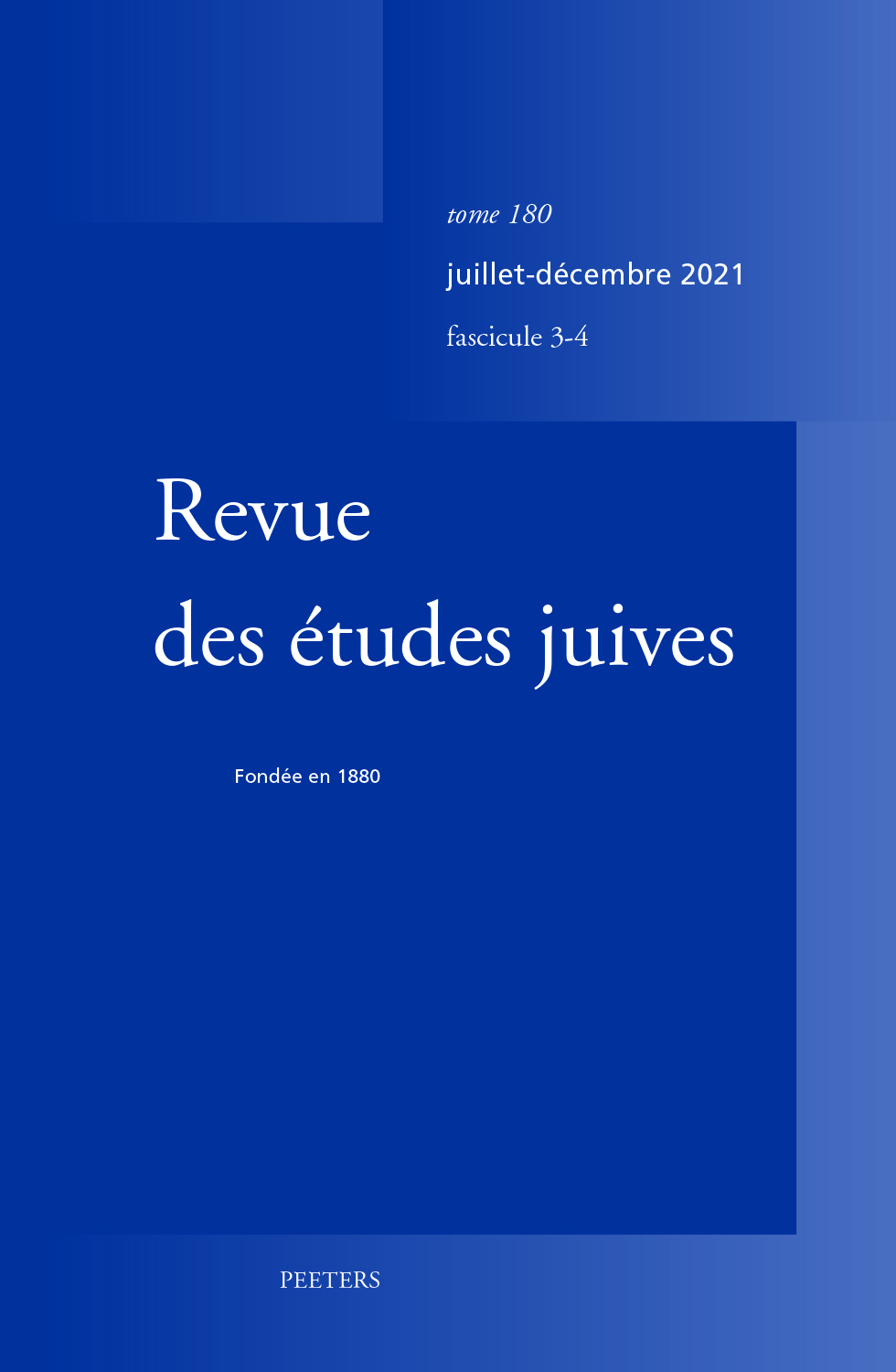 previous article in this issue previous article in this issue | next article in this issue  |

Preview first page |
Document Details : Title: 'The Flower of the Whole World' Subtitle: A Homily on Converts from the Jerusalem Talmud Analyzed in Light of Greco-Roman Floral Motifs Author(s): ROUX, Marie , WILFAND, Yael Journal: Revue des Études Juives Volume: 179 Issue: 3-4 Date: 2020 Pages: 315-331 DOI: 10.2143/REJ.179.3.3288800 Abstract : This study explores the possibility that Roman political rhetoric is reflected in a passage from Jerusalem Talmud Berakhot 2:7, 5b-c that expounds on Song of Songs 6:2. This text equates lilies with converts to Judaism, whom God would pluck from among the nations and gather into Israel, a description which echoes a distinctive floral metaphor that occurs in two Roman sources that address broadening the membership of the Roman Senate and increasing its numbers by recruiting provincial leaders: namely, the Lyon Tablet and the speech by Nazarius in Latin Panegyric X (4).35.1-3. In these Roman and talmudic sources, a higher being identifies the finest men from all other nations and promotes them into a superior community: the Roman emperor elevates provincials to the senatorial order and the God of Israel selects gentiles for the people of Israel. In this study, we survey the use of floral metaphors in Jewish, Christian, Greek, and Roman literature to argue that this talmudic passage applies a Roman motif to present the incorporation of proselytes into Israel in a favorable light. Cet article envisage l’hypothèse selon laquelle un motif de la rhétorique politique romaine aurait été utilisé dans un passage du Talmud de Jérusalem, Berakhot 2:7, 5b-c, qui commente Cantique des Cantiques 6:2. Ce texte assimile les lys aux convertis au judaïsme que Dieu cueillerait parmi les nations pour les rassembler ensuite au sein du peuple d’Israël. Une telle description fait écho de manière frappante à un usage spécial de la métaphore florale qui apparaît dans deux sources romaines faisant référence à l’ouverture du Sénat romain et à l’augmentation de ses effectifs grâce au recrutement de provinciaux, à savoir la table de Lyon et le discours de Nazarius dans Panégyriques Latins X (4).35.1-3. Dans ces sources romaines et talmudiques, une entité supérieure – l’empereur romain ou le Dieu d’Israël – choisit les meilleurs hommes parmi les étrangers – des provinciaux ou des gentils – et les promeut au sein d’une nouvelle communauté d’un statut supérieur – l’ordre sénatorial pour les provinciaux et le peuple d’Israël pour les convertis. Cet article étudie comment les métaphores florales sont utilisées dans des contextes variés – chrétien, grec, romain et juif – et arrive à la conclusion que le Talmud mobilise un motif floral romain pour présenter positivement l’intégration des prosélytes dans le peuple d’Israël. |
|


